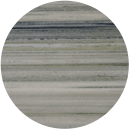
The History Of The
Marble In Our Village
Macael is inexorably linked to the word Marble. The quarries very close to the urban area have been exploited since ancient times, constituting the most important ornamental rock exploitation center in the national territory.
During the Recent Neolithic and Chalcolithic, the populations of the Almanzora Valley took advantage of the white marble stones that dragged the water courses to make small schematic figures called “cruciform idols” or “Almeria idols” that they deposited in collective tombs. In ancient archaeological research they were considered one of the characteristic elements of the “Culture of Almería”.
With the Romans, the Macael quarries began to be exploited on a larger scale, but it is in the Muslim era when there is greater continuity in the extraction.
With the Christian repopulation of Macael,after the explusion of the Moors, the activity of the marble sector resurfaces. Macael’s “Libro de Apeo” (1573) records that the settlers of that time were taking advantage of the marble from the mountains without restrictions. It is considered that here is the basis of the traditional right of the inhabitants of Macael to freely exploit marble. Through a complex and long process, this right ended up being managed by the city council.
By a complex and long process called “The Lawsuit of the Quarries” (1919-1945) this right ended up being managed by the city council.
The commissioning of the Almanzora railway from 1895 marked the beginning of the takeoff of the Macael marble industry and the possibility of distributing its products to the rest of Spain and Europe.
In 1978, after the approval of the new General Regulations for the Mining Regime, the Macael City Council requested to legalize the status of mining concessions. It is in 1981 when the rights of the mining concessions were granted to the Macael City Council, agreeing to renew them for periods of 30 years, renovations that have been happening to date. At present, Macael is the largest marble producer in Spain, which in turn holds second place in the world.
Currently, we want to take another step in terms of the recognition and prestige. This doesn´t just involve the environment of the quarries, but this culture so deeply rooted and its know-how transmitted from generation to generation, through the recent candidacy of the Macael marble stonework to intangible heritage of humanity of UNESCO.

THE MARBLE
QUARRIES
The Macael quarries are located in the central part of the Almería province, on the northern edge of the Sierra de los Filabres, between 1.5 and 6 km. from the town of Macael. They occupy an area of 6,192 hectares, with estimated reserves of 40 million cubic meters.
Come and discover the different places where the different extraction areas are known locally: “Australia”, “Barranco Arispe- Cerro Arispe”, “Polonia”, “Cerro Pelao”, “Rambla Orica”, “Horcajos- Plantones”, “Carretera Alta- Hoyos”, “Canteras de Río”, “Cañailla- Azules”, “Macael Viejo” “Jotatell”, “Puntilla- Barranco Puntilla”, “Umbría del Marchal”, “Culebrón”, “Gran Parada”, “La Reina”, “Polvorín”, “Pozo- Umbría del Pozo” o “Umbría Pila”.
In the Quarries de Macael we find different types of marbles that we can classify by color according to the trade names registered by the “Macael Brand”.

Marble
Varieties

WHITE MARBLE MACAEL
White Macael marble, with a hard and coarse grain, is ideal for construction although it is also widely used in sculptures, tombs and other funerary uses, as well as sinks, mortars and other handicrafts. It is classified according to the purity of the white color, marble being completely white, up to 99% calcite, a rather expensive and exclusive stone with impeccable luminosity. Its white hue contains slight blue iridescence which gives it a unique personality.

WHITE MARBLE MACAEL RÍO
Fairly uniform and medium-grained white-light gray marble. Coming from a place in the municipality of Macael called Río. Its main accessory mineral is quartz, which gives it greater hardness.

WHITE MARBLE MACAEL RÍO VETEADO
White marble with a gray background and vein, whose essential mineral is calcite and quartz as an accessory mineral. It has a medium size grain and is coarse crystallization.

MARBLE GRAY MACAEL
It is a marble halfway between Blanco Macael, although with a darker hue, and Anasol Macael, although with a much lighter presence of veins. It presents quartz, muscovite and albite as accessory minerals to calcite. These gray colored marbles are also known as “the blues”.

YELLOW MARBLE MACAEL
Dolomitic marble of a fairly uniform light yellow color, with an accessory presence of calcite and iron and manganese oxide. It has yellow and green streaks darker than the base color.

MARBLE ANASOL MACAEL
Anasol marble is a “cypolinic marble” that, due to its structure in thin layers of mineral, incorporates parallel green, yellow, pink and gray veins on a white background. The adjective is taken from the famous Greek marble “Cipollino” (onion), from the island of Euboea. The characteristic stratification of Anasol marble in onion layers is due to the presence of mica, specifically Muscovite. It is one of the four most famous Cypriot marbles in the world, along with the aforementioned Greek, an Italian from the Apuan Alps and a Serbian.

GREEN MARBLE MACAEL
Green in color, its texture is irregular with some areas interspersed with calcite. Marketed as marble, geologically it is a serpentinite (serpentinized peridotite).
